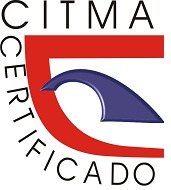Proof of Concept for Supply Chain Traceability with Blockchain Technology
Keywords:
Blockchain, Supply Chain, Smart Contract, Proof of ConceptAbstract
A blockchain is an immutable, highly secure and reliable shared network that provides each participant with end-to-end visibility based on their permission level. This article aims to analyze a solution for the supply chains of agricultural inputs in a case study in Cuba, applying blockchain technology. After describing the main concepts of blockchain technology, its fundamental advantages are analyzed, such as integrity, security and decentralization, to be applied in supply chains. With a view to raising the problem of the traceability flow of products in the agricultural sector, interviews were conducted with a tobacco logistics company in Cuba. As an approach to solve the problems detected regarding traceability and the need to increase confidence in the integrity of the product throughout the chain, a proof of concept is developed on the public Ethereum platform applied to the supply chain model of a specialized tobacco logistics and technical services company.
References
Ayyildiz, E., & Taskin Gumus, A. (2021). Interval-valued Pythagorean fuzzy AHP method-based supplychain performance evaluation by a new extension of SCOR model: SCOR 4.0. Complex & Intelligent Systems, 7(1), 559-576.
Balcik, B., & Beamon B. M. (2008) Facility location in humanitarian relief, International Journal of Logistics, 11(2), 101-121, http://doi.org/ 10.1080/13675560701561789.
Brakeville, S., & Perepa, B. (2016). Blockchain basics: Introduction to distributed ledgers. Int. Bus. Mach, 6, 23-52.
Delgado-Fernández, T. (2021). Taxonomía de Transformación Digital. Revista Cubana De Transformación Digital, 1(1), 4–23. https://rctd.uic.cu/rctd/article/view/62.
Dinh, T. T. A., Liu, R., Zhang, M., Chen, G., Ooi, B. C., & Wang, J. (2018). Untangling blockchain: A data processing view of blockchain systems. IEEE transactions on knowledge and data engineering, 30(7), 1366-1385.
Cachin, C., &Vukolić, M., Blockchain Consensus Protocols in the Wild (2017), obtenido el 11 de octubre de 2021. Disponible en: https://arxiv.org/abs/1707.01873v2
Crosby, M., Pattanayak, P., Verma, S., & Kalyanaraman, V. (2016). Blockchain technology: Beyond bitcoin. AppliedInnovation, 2(6-10), 71.
Gereffi, G. (2001). Las cadenas productivas como marco analítico para la globalización. Problemas del Desarrollo. Revista Latinoamericana de Economía, 32(125). http://dx.doi.org/10.22201/iiec.20078951e.2001.125.7389
Groenfeldt, Tom. IBM and maersk apply blockchain to container shipping. (En línea) Forbes 2017. Disponible en: https://www. forbes. com/sites/tomgroenfeldt/2017/03/05/ibm-and-maersk-apply-blockchainto-container-shipping.
Hackius, N., & Petersen, M. (2017). Blockchain in logistics and supply chain: trick or treat?. In Digitalization in Supply Chain Management and Logistics: Smart and Digital Solutions for an Industry 4.0 Environment. Proceedings of the Hamburg International Conference of Logistics (HICL), 23 (pp. 3-18). Berlin: epubli GmbH.
Hyperledger Foundation, (s/f). How Walmart brought unprecedented transparency to the food supply chain with Hyperledger Fabric. Accedido en Agosto 2022.
McKinsey. (2017). Blockchain Technology in the Insurance Sector. En Proceedings of the Quarterly Meeting of the Federal Advisory Committee on Insurance (FACI). New York, NY, USA: McKinsey & Company.
Monleón-Durá, A. (2020). Sistema de trazabilidad para cadenas de suministro con blockchain en un entorno empresarial (Doctoral dissertation, Universitat Politècnica de València).
Nakamoto, S. (2008). Bitcoin: A peer-to-peer electronic cash system. Decentralized Business Review, 21260.
Song, L., Luo, Y., Chang, Z., Jin, C., Nicolas, M. (2022). blockchain Adoption in Agricultural Supply Chain for Better Sustainability: A Game Theory Perspective. Sustainability 2022, 14, 1470. https:// doi.org/10.3390/su14031470
Steinmetz, R., & Wehrle, K. (Eds.). (2005). Peer-to-peer systems and applications (Vol. 3485). Springer.
Ramírez, J. P. V. (2019). Contratos inteligentes. Revista de Investigación en Tecnologías de la Información: RITI, 7(14), 1-10.https://doi.org/10.36825/RITI.07.14.001.
Tiwari, H., & Asawa, K. (2012). A secure and efficient cryptographic hash function based on NewFORK-256. Egyptian Informatics Journal, 13(3), 199-208.https://doi.org/10.1016/j.eij.2012.08.003.
Yeow, K., Gani, A., Ahmad, R. W., Rodrigues, J. J., & Ko, K. (2017). Decentralized consensus for edge-centric internet of things: A review, taxonomy, and research issues. IEEE Access, 6, 1513-1524.https:// doi.org/10.1109/ACCESS.2017.2779263.
Wu, K., Ma, Y., Huang, G., & Liu, X. (2021). A first look at blockchain-based decentralized applications. Software: Practice and Experience, 51(10), 2033-2050. https://doi.org// 10.1002/spe.2751.
Downloads
Published
How to Cite
Issue
Section
License
Copyright (c) 2022 Arturo Cáceres Hernández, Tatiana Delgado Fernández, Igor Lopes Martínez

This work is licensed under a Creative Commons Attribution-NonCommercial 4.0 International License.













